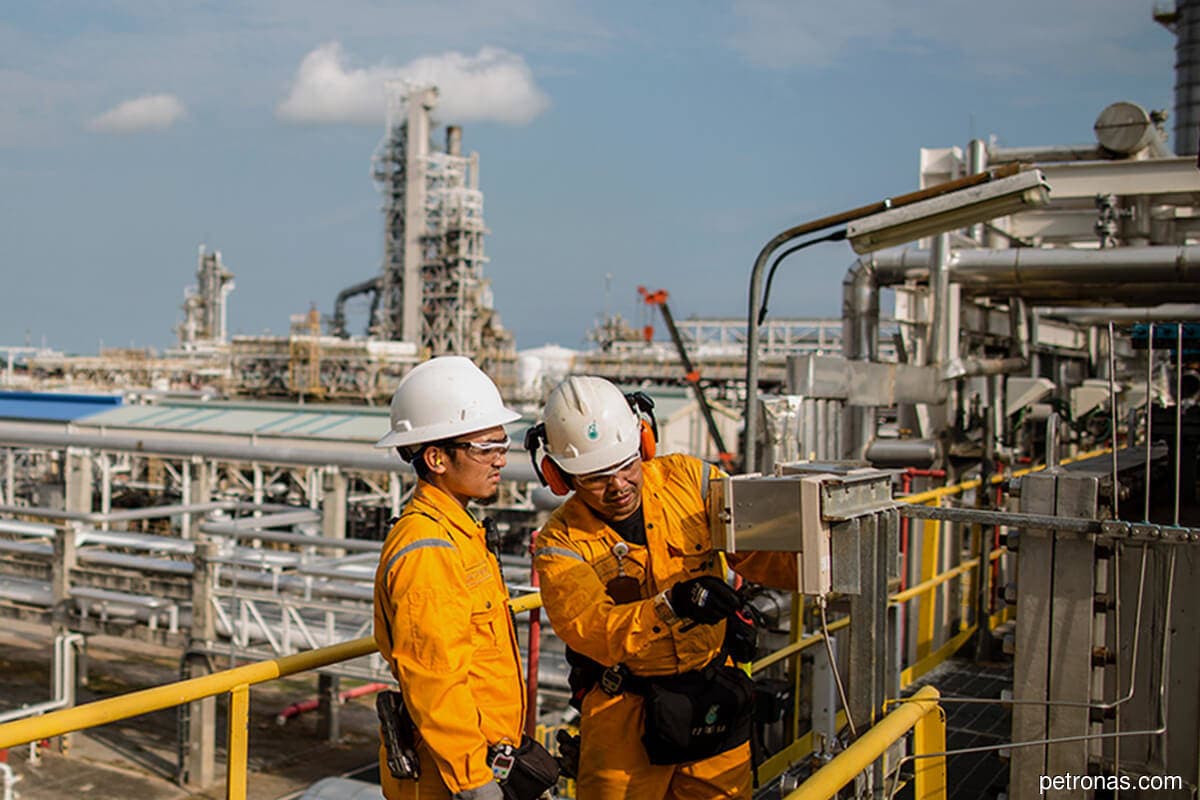
KUALA LUMPUR (Nov 4): Whether Budget 2021 has prepared for oil prices slipping below US$40 a barrel would be one of many focus areas in the upcoming tabling of the National Budget this Friday, with Brent crude oil prices again slipping below US$40 a barrel.
Brent had largely stayed above US$40 a barrel until Oct 28 when news of a surge in US inventories coupled with a resurgence of Covid-19 cases in the US and Europe renewed fears of worsening global demand. It dipped to US$37.46 — the lowest since early June. Brent crude oil prices currently average US$42.51 a barrel year to date as at the time of writing.
Federal government revenue was estimated at RM244.5 billion when Budget 2020 was tabled in October 2019, with oil-related sources making up 20% of the expected receipts that assumed crude oil prices at US$62 a barrel.
When revising lower the Budget 2020 oil price assumption to US$30 to US$35 per barrel in June, the government said it was looking to supplement income and redirect saved expenses, including unused fuel subsidy and savings on events that had to be postponed due to social-distancing restrictions.
At the time, the US$22 per barrel fall in oil price from US$62 to US$40 was estimated to have cost RM6.6 billion, based on the guidance of every US$1 drop in oil price reducing government receipts by RM300 million.
A conservative oil price assumption would eliminate the need to revise Budget 2021, should oil prices slip significantly below the numbers it had used for planning.
Both Budget 2015 and Budget 2016 had to be revised a few months after they were tabled, owing to a fall in global oil prices. The oil price assumption for Budget 2015 was revised to US$55 a barrel from US$100 to US$105 a barrel while the oil price assumption for Budget 2016 was cut from US$48 a barrel to US$30 a barrel.
To recap, the crude oil prices collapsed in 2015. The Brent crude dropped from US$67.77 in June 2015 to US$27.88 in January 2016.
On Monday, Minister in the Prime Minister's Department (Economy) Datuk Seri Mustapa Mohamed revealed in a written reply in Parliament that national oil company Petroliam Nasional Bhd (Petronas) would be paying the government RM34 billion dividend for this year — which is RM10 billion more than the RM24 billion dividend estimated in Budget 2020.
The size of Petronas' dividend to the government for Budget 2021 would also be much watched, given that it is the portion of the government's oil-related revenue that may not necessarily fluctuate along with oil price movements, unlike oil-related taxes and royalties.
For Budget 2019, Petronas paid RM54 billion dividend to the Pakatan Harapan government, including a RM30 billion special dividend (on top of RM24 billion regular dividend) to help repay RM37 billion in excess taxes owed to individuals and businesses.
In September, Petronas' second-quarter earnings release was one of its worst on record, with oil prices averaging below US$30 a barrel in the second quarter as Covid-19-related lockdowns sapped demand. Even excluding impairment losses that pushed the numbers RM16.5 billion in the red, its profit for the first half would have only been RM7.7 billion — down 73% from RM28.9 billion in the same period last year.
While Petronas, like all oil majors globally, is facing a tough operating environment as Covid-19-related movement restrictions sapped demand for transport and air travel, it had RM157 billion cash versus RM93 billion debt as at end-June this year.
When affirming Petronas' long-term foreign and local currency issuer default ratings at "A-" with a negative outlook in September, Fitch Ratings noted that Petronas — which accounted for more than 15% of the Malaysian government's revenue over the last five years — had a stand-alone credit profile of "aa-" — "stronger than that of its owner, reflecting the company's very strong financial profile, large-scale and integrated oil and gas operations".
Petronas — which raised US$6 billion in the second quarter of 2020 — is also a leading global supplier of liquefied natural gas, producing 1.75 billion boe/d in 2019, up from 1.69 million boe/d in 2018, Fitch noted in its statement dated Sept 17, which assumed oil prices at US$41 per barrel in 2020, US$45 per barrel in 2021, US$50 per barrel in 2022 and US$53 per barrel thereafter. Fitch also assumed annual dividend payment of RM16 billion for 2021 and RM24 billion to RRM26 billion from 2022 to 2023, the statement read.
Yet it is because of the hardship that the people and businesses are facing that the government is expected to spend more to bolster and stimulate the economy. Businesses need to be helped to thrive again to ensure that people continue to have jobs.
If Petronas is tapped to bolster revenue in Budget 2021, despite the tough times it is facing, the federal government would need to make sure every ringgit is used well to save the economy from slumping into a deeper recession. Once the economy improves, however, the government has to demonstrate its ability to diversify its revenue sources and cut dependency on oil-related revenues.

